Today we offer a little bounty of wines from Ceretto
The just released Barbaresco 2016 and Barolo 2015
Babaresco ‘Bernadot’ 2015, 2014
Barbaresco ‘Bricco Asili from 2015, 2014, 2009
Barolo 2013
Barolo ‘Prapo’ 2013
Barolo ‘Bricco Rocche’ 2013, 2008, 2006
Check out the pre-craziness prices of the older wines. Only a few bottles of each available.
I had the pleasure of trying the 2015 Barolo earlier this week. It’s a cracker. So together, clearly a great elevage. Lythe and elegant with just a faint hint of oak. It’s sophisticated and plush. Tar and roses layer in fennel, anise, fresh cherries, earthiness, happiness, and lovely acid. Delicious long Neb! Deceptive, the power of the fruit is build yet only after you swallow it. At the moment I prefer the tannins here than in the 2016 Barbaresco. It will be interesting to see how they compare in a few years. This wine shows how far Ceretto have come since the early heavy-handed days. Inviting and warming. Fresh, yet with a lovely level of development for a wine of its age. It’s a triumph!
The 2016 Barbaresco is beautiful. You can see the influence of Asili, the grace and elegance. I haven’t looked at the wines of Ceretto for some time and was concerned about oak use. Their Barbaresco has no such issues. Galloni’s call of energy and translucent vibrancy is on the money. Excellent fruit and perfume offer a refined scent. Texturally it is has a little hit of Neb tannin in mid-palate with a minor, minor layer of oak tannin. When you try Dave Fletcher’s own wines you can see the hand of the winemaker hovering above without playing too much. The same can be said for the wines of Ceretto.
I’ll be intrigued to try more broadly across the range soon.
Alessandro Ceretto’s 2015 Barolos and 2016 Barbarescos are built on the work he and his team have done over the last few vintages. The wines are super-expressive, finessed and full of Nebbiolo translucency. These days Ceretto favors long-ish fermentations of 25-30 days on the skins. The wines spend a year in French oak and finish their aging in cask. All of these wines are gorgeous. Antonio Galloni
Evolution in the vineyard & winery
Oak from 100% down to 10% or less
In the vineyard Ceretto has been shifting to organic and biodynamic practices, paying much more attention to the soil and establishing a mother vineyard using selection massale propagating only the best vines.
In the winery experimentation has been constant, only now do they seem to be settling on some basic practices. Skin contact has gone from long to short and now sits in the middle. Oak use lifted to 100% new oak and then dropped to half to a third gradually decreasing to around 10% by 2012 with Botti coming back into the picture from 2010. They’ve played with wild yeast, but, ended up with too many stuck and volatile ferments, converting back to commercial yeast after a couple of years.
If you don’t like oak in your Neb go for the 2013-2015 wines if you don’t mind a bit the older wines come into play.
All in all Ceretto’s wines are tending to more restraint and elegance. Deceptively so given the fruit concentration in many of their vineyards. A winery to watch. Trying their DOCG Barolo & Barbaresco is a good way to get your eye in.
About Ceretto
Ceretto is a third generation family wine enterprise that was founded more than 70 years ago.
Its turning-point came in the Sixties, with the arrival on the scene of the second generation: Bruno, who took over the commercial side of the business, and Marcello, who acted as Technical Director. These brothers, polar opposites in nature, worked together to gradually improve the quality of their wines and their vineyards and the reputation of their region. They achieved this by focussing on the concept of terroir and selecting only the finest crus of Barolo and Barbaresco.
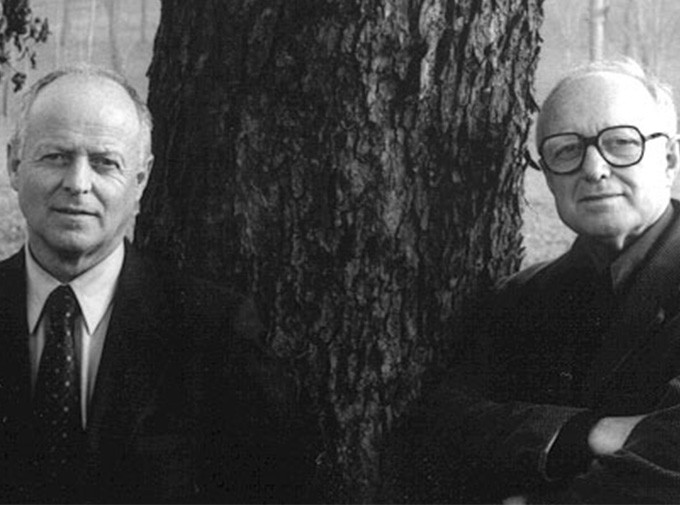
In a little more than thirty years, the Ceretto brothers created a network of small independent estates in the Langhe and Roero, purchasing over 120 hectares of land to form a constellation of wineries producing outstanding labels such as the Bricco Rocche Barolos, the Bricco Asili Barbarescos, Blangé Arneis, Moscato from Vignaioli di Santo Stefano, Dolcetto, Barbera, Langhe Monsordo and grappas.
However, not content with just improving the quality of their wines, the brothers also focussed on developing the cultural interests of the family company. They brought in famous designers and architects to develop their winery sites, produced labels that are works of graphic art, and supported book prizes and musical events in the surrounds of Alba, all because of their belief that wine is above-all culture.
In 1999, the next generation joined the family business: Marcello’s heirs, Lisa and Alessandro, in finance & administration and production respectively; and Roberta, Bruno’s firstborn, working in public relations and the promotion of parallel ventures, while her brother, Federico, took on responsibility for the export markets.
Drawing on the craft and temperament, and the aptitude and skills of their fathers, this new generation of Cerettos is demonstrating that tradition also means transition, looking to the future whilst continuing along the twin tracks laid down by their parents.
After about 80 years of ultra-fine winemaking, the Ceretto family continues to be a reference point for Piedmont wine. First came Riccardo Creretto in the 1930s. Then it was the Barolo Brothers, Bruno and Marcello, who changed the winemaking world with their stylish, finely crafted nebbiolos from key vineyards in Barolo and Barbaresco. Now, the brothers’ children are fine-tuning their achievements, and moving forward fast. Their single-vineyard Barolo, Bricco Rocche, is a benchmark for the region. James Suckling
Biodynamics in the Vineyard
OK .. if your Italian is half decent you’ll be OK with this one!
Where in the World is Ceretto?
Ceretto has built a little empire over the years with sites across Piedmonte.
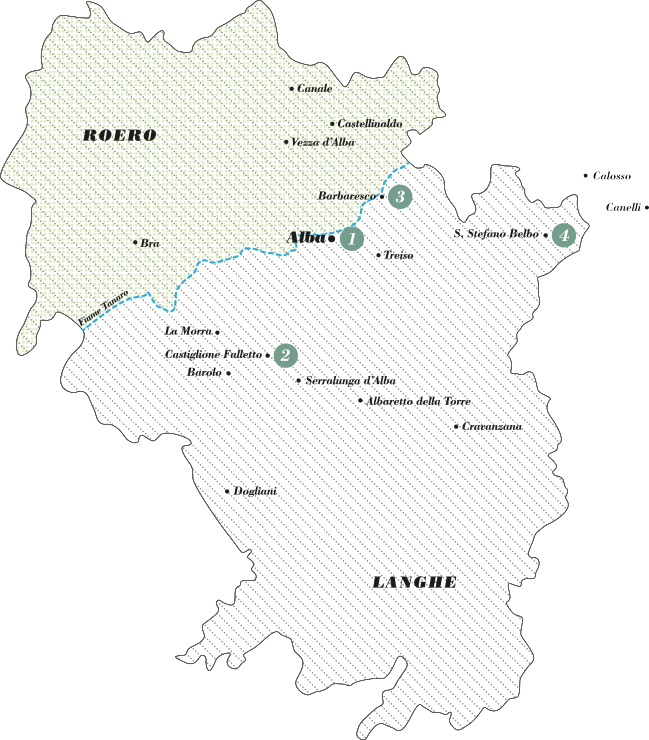
Barolo – Bricco Rocche
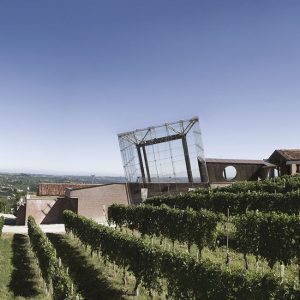
A painstaking search lasting years led to the selection of four vineyards in the Barolo wine-growing area. At their centre lies the winery in Castiglione Falletto. Designed by Turin architects De Abate according to modern criteria, it was built to meet every functional requirement whilst blending into the surrounding landscape.
Only Barolo is produced here, from the grapes grown on the 11 hectares of estate owned vines situated in the villages of La Morra (Brunate), Serralunga (Prapò), Castiglione Falletto (Bricco Rocche) and Barolo (Cannubi), for an annual production of just 40 000 bottles.
Barbaresco – Bricco Asili
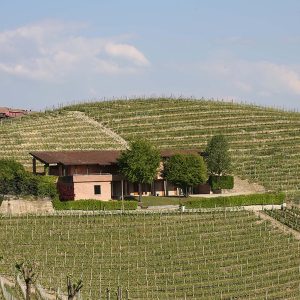
A small château, one of the few examples in Piedmont of a winery in a vineyard, Bricco Asili was the first Ceretto estate, opened in 1973 and still at the top today in the production of Barbaresco.
It is a place of experimentation, where down the years change has been the only constant, though traditions continue to be treated with the greatest respect. A prime example is the adoption as early as the beginning of the Seventies of steel tanks for processing the grapes: an indispensable tool in guaranteeing the utmost cleanliness and perfect temperature control.
The farm works around 15 acres of vineyards divided between two crus – Bricco Asili and Bernardot – for an annual ‘low volume – high quality’ production of around 20 000 bottles.
Langhe – Monsordo Bernardina
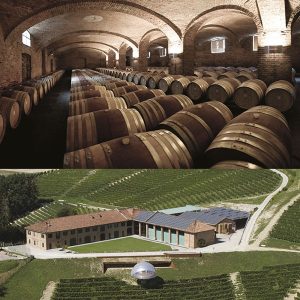
Finding an old farmstead, and transforming it into a fully-equipped state-of-the-art headquarters: the Monsordo-Bernardina project fully reflected the Ceretto spirit, which is always hovering between tradition and innovation.
Since 1987, this estate on the outskirts of Alba has been the nerve centre where the company’s financial and commercial operations and offices are concentrated, along with the warehouse which brings together all the wines from the various estates.
Some of the firm’s historic labels are also produced here: Arneis Blangé, Arbarei, Monsordo, Dolcetto Rossana, Barbera Piana, Nebbiolo Bernardina, Barbaresco Asij, Barolo Zonchera and Barolo Chinato.
At its best, Ceretto’s Barbaresco Asili is a wine of great refinement and perfume, harmonious acidity and silky tannins, exuding archetypal Nebbiolo aromas and flavors of sour red cherry, wild red berries, sweet spices and violet (and tar with age). The wine’s mouthfeel is especially interesting, as the Asili is remarkably graceful and light on its feet, a characteristic that immediately distinguishes Barbaresco from Barolo but can also be mistaken for leanness. Last but not least, Ceretto’s Barbaresco Asili has displayed remarkably consistent gracefulness and transparency to site. Antonio Galloni
Asti – Vignaioli di Santo Stefano
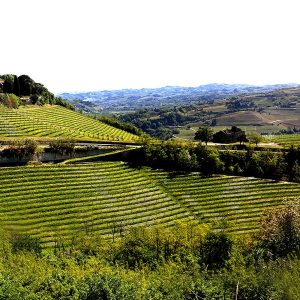
With an almost metaphorical return to their origins, in 1976 the Ceretto brothers – together with two partners (Sergio Santi and the brothers Gianpiero and Andrea Scavino) – founded I Vignaioli di Santo Stefano in the village where their father, Riccardo, was born.
The farm works 20 acres of its own land, as well as the San Maurizio estate leased from Count Carlo Vittorio Incisa Beccaria, a prestigious hillside area of approximately 80 acres in Santo Stefano Belbo.
Around 160 000 bottles of Moscato d’Asti, 20 000 of Asti, and 5 000 of Moscato Passito are produced here on average each year.
About the Wines
The Barbarescos
Ceretto Barbaresco 2016
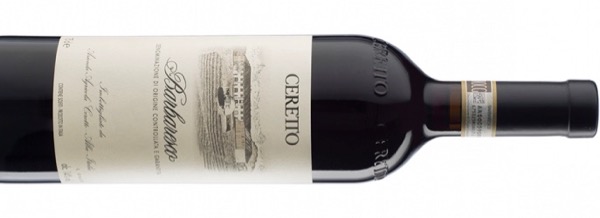
This classic Barbaresco is a blend of our finest vineyards, a small part of Asili, the part with younger vineyards, and the lowest part of Bernadot in Treiso. With the union of these two different expressions, the wine achieves a better balance than vinifying the two wines as separate parcels. While on the one side there is the explosive finesse of Asili and on the other, the fullness of the Treiso cru, in the glass we find the right balance; the result is a delicious and traditional wine, a perfect example of an area that moves between structure and elegance.
Ceretto's 2016 Barbaresco is bright and very nicely focused, with tremendous energy and a sense of translucent vibrancy that is simply compelling. Sweet red berry and floral notes are finely sketched in this gorgeous positively striking Barbaresco from Ceretto. I tasted the 2016 from cask prior to bottling. The straight Barbaresco is a blend of 65% Bernardot and 35% Asili from younger vines and lower, less well-exposed parcels. More importantly, though, the straight Barbaresco is a terrific introduction to the vintage at Ceretto.
A beautiful Barbaresco, you can see the influence of Asili, the grace and elegance. I haven't looked at the wines of Ceretto for some time and was concerned about oak use. Their Barbaresco has no such issues. Galloni's call of energy and translucent vibrancy is on the money. Excellent fruit and perfume offer a refined scent. Texturally it is has a little hit of Neb tannin in mid-palate with a minor, minor layer of oak tannin. When you try Dave Fletcher's own wines you can see the hand of the winemaker hovering above without playing too much. The same can be said for the wines of Ceretto.
Ceretto Babaresco 'Bernadot' 2015
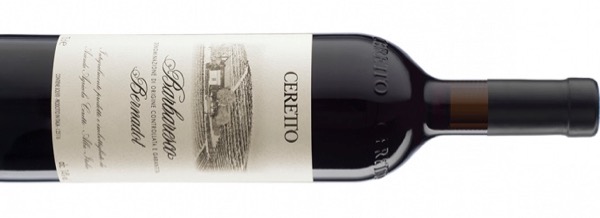
This beautiful vineyard, located below the village of Treiso, towards the Pertinace hamlet, has been considered one of the best of the commune for more than a century. It is thought to be the natural continuation of the Nerve, which has the same orientation and position of the land. The vineyard is enclosed in a natural amphitheater and this formation creates a special microclimate very favourable to the vines, which is not affected by considerable height (400 meters in the upper-most part). Ceretto works 4.8 hectares of this cru biodynamically, which year after year gives us more and more expressive wines, extremely pleasing on the palate and remarkably dynamic.
The 2015 Barbaresco Bernardot is laced with sweet red cherry, kirsch, mint, cinnamon and wild berry. The natural ripeness of 2015 makes the Bernardot easy to drink young, even if there is a good bit of tannin that could use more time in bottle to soften. Here, too, the current Ceretto style that emphasizes mid-weight structure is quite apparent. Time in the glass brings out the more virile side of Barbaresco in a wine that expresses the myriads shades of contrast that make Nebbiolo such a fascinating grape.
Quite reduced at first, but opens nicely to reveal wild strawberries, fresh lemons and spices. Medium body, fine and lithe tannins and a tangy finish. A delicate, floral style. From organically grown grapes. Drink in 2021.
Ceretto Babaresco 'Bernadot' 2014
The 2014 Barbaresco Bernadot is powerful, ample and seductive, with all of the breadth that is so typical of Barbarescos from Treiso. Deeply spiced aromatics meld into a core of intense dark red and blue-hued fruits as this generous, super-expressive Barbaresco shows off its personality. All the elements simply fall into place in an impeccable, beautifully crafted Barbaresco from Ceretto. The 2014 is all class.
Aromas of smoke, dried fruit and fruit tea follow through to a full body. A medium mid-palate and a flavorful finish. Shows the difficult of the vintage, but it delivers excellent quality. Drink now.
Antonio Galloni
Ceretto Barbaresco 'Bricco Asili' 2015
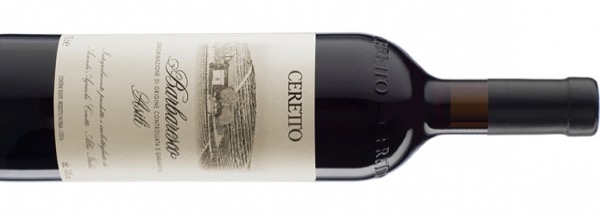
It is one of the most representative climates of the appellation and is the symbol of the town of Barbaresco, with its amazing finesse and power, and disarming elegance and longevity. The vineyard area goes down to the bottom of the hill starting at 290 metres above sea level at the peak, and 200 metres in the valley. The land is marked by the presence of St. Agata Fossil Marne and is South / South-West facing. Ceretto owns the top (“bricco”) of the hill (just over one hectare) that because of its specific undulations could be considered an almost standalone production environment. The grapes of this vineyard have been vinified separately as a single parcel since the first half of the ’70s.
Check out Aldo Vacca, Alessandro Ceretto, Luca Roagna and Giulio Grasso discussing Asili on Vinous.
Over the years, viticulture and winemaking have evolved at Ceretto, and differences in the Bricco Asili and Asili wines through the years reflect these changes as much as they do vintage diversity and the increasing age of the wines. Marcello Ceretto was the original winemaker was. Donato Lanati was brought on as consulting winemaker from 1989 through 2003; and from 1985 to 2012 Mauro Danieli also consulted herfe. From a viticultural perspective, today Ceretto practices biodynamic farming (they began in 2010 with 12 hectares and now farm roughly 90 hectares biodynamically) and the family has worked closely with soil experts Claude and Lydia Bourguignon, who consult in France and around the world, helping wine-growers understand their soils and terroirs and improve the life of their vineyards. Additionally, for three years beginning in 1990, Ceretto scoured their vineyards and made massal selections of their best Nebbiolo vines in Barolo and Barbaresco, establishing a “mother collection” of the best vines. It is from there that Ceretto sources new vegetative material any time the estate needs to replant a dead vine, a row or a vineyard.
Asili’s Nebbiolo grapes are usually harvested—depending on the vintage, of course—at the end of September. These days, total time on the skins lasts 25 to 30 days, with the fermentation starting at 15°C but never topping 28° or 30°. By contrast, up until the mid-’90s, Alessandro’s father Marcello used the cappello sommerso (submerged cap) technique and the total cuvaisonlasted 30 days or more, with temperatures creeping up to 32°C. In the early ’90s, under the guidance of consulting winemaker Donato Lanati, fermentations and contact with the skins were greatly shortened, to about 15 days. But Ceretto found that this wasn’t enough time to fully extract all of the aromatic molecules Nebbiolo skins could give, despite heating the must at the beginning of the fermentation, which was done in an effort to extract as much color as possible at a time when bright red Nebbiolo wines were not considered to be sufficiently dark.
Alessandro Ceretto has also studied the use of various yeasts over the years. In 2009 he decided to stop using the commercial yeasts that the estate had been working with since the mid-’90s. But he was unimpressed with the results obtained by using native yeasts, finding that the risk of irregular or even stuck fermentations was too high, and he returned to using selected yeasts after two years. The oaking regimen for the Barbaresco Asili has also changed over time. When Marcello Ceretto was making the wine in the 1980s and early ’90s, he aged it for two years in large oak casks. From 1996 through 2006, the wine was aged entirely in new 300-liter French oak barrels; after 2006, the amount of new oak was decreased to 33–50%. Beginning with the 2012 vintage, the new oak component was reduced further, to only 10%. Moreover, as of 2010, large Slavonian oak barrels were reintroduced to age the wine during its second year of life (much earlier, Ceretto had used large oak barrels as an aging vessel until 1993, which was the last vintage before the estate switched over to two years of barriques and tonneaux only).
Ceretto's 2015 Barbaresco Asili is surprisingly reticent, almost uncharacteristically so for this wine and cru. That is probably a good thing for its long-term aging prospects, but readers expecting a sensual young Asili will be shocked by how shut down the 2015 is at this stage. Crushed berries, mint and red berry fruit grace this very pretty, classically austere Barbaresco from Ceretto. The 2015 is a superb wine in the making.
Ceretto Barbaresco 'Bricco Asili' 2014
The 2014 Barbaresco Bricco Asili is almost shockingly powerful. Dark, intense and virile in its expression, the 2014 shows a distinctly masculine side of Asili, with huge fruit and equally imposing tannins. Today, the 2014 is raw and unformed, but also full of potential. Dense and packed, the Bricco Asili shows a bit of oak influence that needs time to integrate. I can't wait to taste it in another year or two.
Luminous bright red. Perfumed aromas of red cherry, red rose, violet and minerals are complicated by delicate hints of cinnamon and quinine. Dense, juicy and bright in the mouth, with powerful, penetrating red cherry and raspberry flavors boasting a strong mineral underpinning. The finish is silky and long, not to mention strongly perfumed by a very pure repeating note of violet. A knockout Asili of uncommon power. Readers who have had the foresight to stock up are in for a treat. In 2014, Barbaresco had 300 millimeters less rain than Barolo, and that difference really shows in Barbaresco’s surprisingly successful wines.
Ceretto Barbaresco 'Bricco Asili' 2009
The 2009 Barbaresco Bricco Asili is a pure joy to taste. Weightless and gracious, the 2009 wafts from the glass with the essence of freshly cut flowers, spices, red berries and crushed rose petals. The finesse of tannins elevates the Asili to a rarified air among the very best wines of the year. Seemingly endless layers of pure, textured floral fruit remain in the empty glass. This is a flat-out gorgeous wine in every way. I imagine the 2009 will enjoy a long and broad drinking window. Frankly, it is virtually impossible to resist today.
Blackberry and plums with hints of milk chocolate on the nose. Flowers too. Full body with fine tannins and a tangy finish. Walnut undertone. Bright acidity and clean fruit. Lively. Best in 2014.
The Barolos
Ceretto Barolo 2015
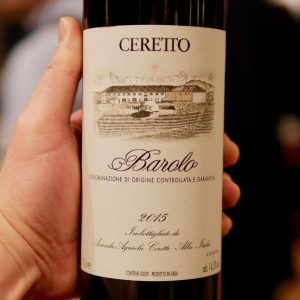
The idea of combining different sensations to create a good balance is the basis of the original concept of Barolo; the more traditional producers have always tried to avoid prioritising the single expression of the vineyard in lieu of the right balance in the glass. And so it is in our classic Barolo, two souls of the appellation coexisting: the more gentle one, whose area is defined by the Tortonian soils of La Morra and Barolo, of which Brunate is an example, and the more austere and masculine one, coming from slopes with typical Helvetian soil, such as those at the base of Gabutti in Serralunga.
It’s a stylistic choice, that of trying to interpret the taste of the appellation’s namesake, which gives us a rich and virile wine, able to be enjoyed young or after its evolution, for the passionate.
A very pretty wine in its peer group, Ceretto's 2015 Barolo is pliant, open-knit and quite pretty, and yet it appears to have a good bit of supporting structure as well. Floral overtones and bright red berry fruit open up in this super-expressive, silky, entry-level Barolo from Ceretto. The balance of fruit and structure is impressive, but more than anything else, the 2015 is simply delicious.
I had the pleasure of trying the 2015 Barolo earlier this week. It's a cracker. So together, clearly a great elevage. Lythe and elegant with just a hint of oak. It's sophisticated and plush. Tar and roses layer in fennel, anise, fresh cherries, earthiness, happiness, and lovely acid. Delicious long Neb! Deceptive, the power of the fruit is build yet only after you swallow it. At the moment I prefer the tannins here than in the 2016 Barbaresco. It will be interesting to see how they compare in a few years. This wine shows how far Ceretto have come since the early heavy-handed days. Inviting and warming. Fresh, yet with a lovely level of development for a wine of its age. It's a triumph!
Ceretto Barolo 2013
The 2013 Barolo is a superb, entry-level wine from Ceretto. Plush, deep and inviting, the 2013 will drink well pretty much upon release. A beguiling mélange of spice, cedar, tobacco and dark stone fruit notes fleshes out effortlessly. The 2013 looks to be a relatively early maturing wine, but it will provide considerable pleasure before that is an issue.
Ceretto Barolo 'Prapo' 2013
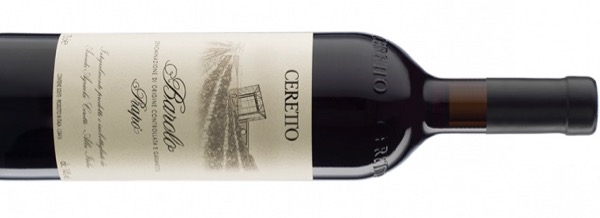
This vineyard, located half-way between the hamlet of Baudana and the village of Serralunga d’Alba, is without a doubt one of the best exposed plots of the eastern side of the town. The orientation is South / South-East and the altitude is between 270 meters and 380 meters. The soils (conformations of Lequio), have a high percentage of silt and clay (over 30%) and this feature means the wines produced in the area have a distinct and rare punchiness.
Ceretto owns 2.4 hectares (of the 8.5 hectares of the total sub-zone) featuring a high average age of the vines, planted in the ’70s. Compared to the western side of the appellation, the Prapò vineyard has a gap in the harvest period, which in some years may exceed 10 days; this allows the grapes to mature slowly and exhibit good polyphenolics.
The 2013 Barolo Prapò shows quite a bit more Serralunga muscle and power than it did when I last tasted it. The tension between the wine's elegance and its more natural leanings towards power is utterly compelling. Orange zest, cinnamon, dried flowers, iron and smoke infuse the deep, resonant finish. Not surprisingly, the 2013 appears headed into a period of dormancy. I wouldn't touch a bottle anytime soon.
Ceretto Barolo 'Bricco Rocche' 2013
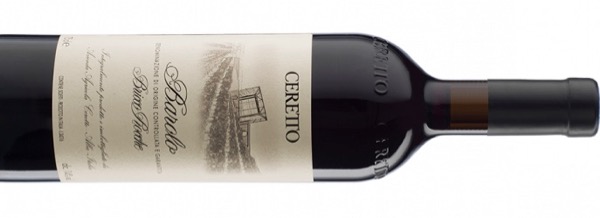
One of the first classified crus. It is not only the best know vineyard of Monforte d’Alba but also one of the true superstars of the entire appellation, capable of stimulating the desires of wine lovers all over the world.
Ceretto has a small parcel with south exposition in the heart of the vineyard Bussia Soprana. The average age of the vines is around 25 years. The vineyard is certified organic but managed biodynamically.
The 2013 Barolo Bricco Rocche is another magnificent wine from Ceretto. The interplay of aromatics, fruit and structure is simply dazzling. All of the perfume of Bricco Rocche comes through, but there is also more than enough acidity, structure and overall depth to provide for many years of exceptional drinking. Aromatic intensity, tension and layered fruit are some of the signatures. Wow!
Lots of ripe fruit here, yet this is fresh and aromatic, not to mention focused. Full body, ultra-fine tannins and a long and flavorful finish. The texture and beauty are exceptional. Try in 2022.
Ceretto Barolo 'Bricco Rocche' 2008
After about 80 years of ultra-fine winemaking, the Ceretto family continues to be a reference point for Piedmont wine. First came Riccardo Creretto in the 1930s. Then it was the Barolo Brothers, Bruno and Marcello, who changed the winemaking world with their stylish, finely crafted nebbiolos from key vineyards in Barolo and Barbaresco. Now, the brothers’ children are fine-tuning their achievements, and moving forward fast. Their single-vineyard Barolo, Bricco Rocche, is a benchmark for the region. Their recent Ceretto 2012 Bricco Rocche is a revelation, one of their best, and is on the same level as the great 2008.
The 2008 Barolo Bricco Rocche is one of the very finest wines I have tasted from Ceretto in a long time. Layers of fruit flow effortlessly from this classy, elegant Barolo. All of the elements are in place in this superb, polished effort. Sweet dark cherries, roses, spices and licorice are woven into the textured, generous finish. I can only hope the 2008 Bricco Rocche is a sign of what we can expect from Ceretto in the coming years.
Racy. Ripe plum almost prune with bright cherries and dried flowers. Full-bodied, with powerful yet refined tannins. This is very muscular yet very fine. Muscular and polished. One of best Bricco Rocches ever. Better in 2016.
Ceretto Barolo 'Bricco Rocche' 2006
The 2006 Barolo Bricco Rocche is a touch firmer than the Brunate. Flowers, spices and dark red fruit cover the palate with lovely density as this beautifully-balanced, articulate Barolo opens up in the glass. Today the Bricco Rocche is fairly accessible, but I would not be surprised to see it put on additional weight in bottle, as so often happens with Barolos from the village of Castiglione Falletto. There is plenty of vineyard expression in the glass, no doubt a result of the reduction in oak.
This is round and velvety, with plenty of dried fruits and cedar. Full and chewy. Needs to soften with time. I am really taken with the depth of fruit in this young Barolo. Give this until 2013.
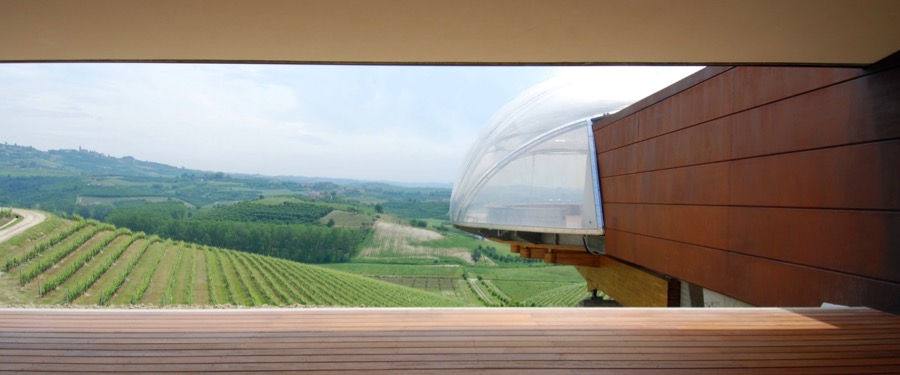


You must be logged in to post a comment.